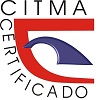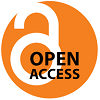Mobile devices as a means of teaching - learning in the pedagogical process
Mobile devices as a means of teaching - learning in the pedagogical process
Keywords:
mobile devices, alternative communication, teaching – learning, new technology, emerging technology, mobile learningAbstract
Information and Communication Technologies have caused a great impact on all human activities. With the emergence of mobile devices, a profound process of transformation in availability and access to the most widely used knowledge in all social spheres has been accelerated. These devices represent an ideal scenario since the new technologies that are frequently used in society are can be integrated through rational and structured planning into the teaching-learning process in education, thus seeing the possibility of inserting mobile learning into the teaching-learning process, but: How to incorporate this emerging technology into educational practice? What would be the expected result of the use of mobile devices in education? These are some of the questions that this research will try to clarify.
Downloads
References
GEF, G. E. (Dirección). (2010). Crisis del Modelo Educativo e Innovación Disruptiva en las Aulas. [Película]. Obtenido de http://www.youtube.com/playlist?list=PLCE9F032EDD6D9D43
Hokyoung, R., & Parsons, D. (2009). Designing Learning Activities with Mobile Technologies. En R. Hokyoung, D. Parsons (Eds.), Innovative mobile learning. Techniques and Technologies (pp. 1-20). Hershey: Information Science Reference.
Koole, M. (2006). The framework for the rational analysis of mobile education (FRAME) model: An evaluation of mobile devices for distance education pág 48. Obtenido de http://citeseerx.ist.psu.edu/viewdoc/download?doi=10.1.1.88.12&rep=rep1&type=pdf
Koole, M. (2009). A Model for Framing Mobile Learning. En M. Ally (Ed.), Mobile Learning: Transforming the Delivery of Education and Training pág. 25-47. Athabasca University.
Laurillard, D. (1993). Rethinking University Teaching. A framework for use effective use of educational technology. London: Routledge.
Laurillard, D. (2002). Rethinking University Teaching. A conversational framework for the effective use of learning technologies. London: RoutledgeFalmer.
Laurillard, D. (2007). Pedagogical forms for mobile learning: framing research questions. En N. Pachler (ed.), Mobile learning: towards a research agenda (pp. 153-175). London: WLE Centre, IoE.
Laurillard, D. (2012). Teaching as a Design Science. Building Pedagogical Patterns for Learning and Technology. New York: Routledge.
Moore, M. (1973). Toward a theory of independent learning and teaching. Journal of Higher Education, 44(12), pp. 661-679.
Moore, M. (1993). Theory of transactional distance. En D. Keegan (Ed.), Theoretical Principles of Distance Education (pp. 20-35). . New York: Routledge.
Park, Y. (2011). A pedagogical framework for mobile learning: Categorizing educational applications of mobile technologies into four types. The International Review of Research in Open and Distance Learning, (pp.78-102.). Obtenido de http://www.irrodl.org/index.php/irrodl/article/view/791/1699
Ramón Verdú, A. J. (2015). Propuesta de un Modelo Teórico de Enseñanza para Entornos de Aprendizaje Móvil en las Enseñanzas Artísticas Visuales. Murcia.
Traxler, J. (2009). Current State of Mobile Learning. En M. Ally (Ed.), Mobile Learning: transforming the delivery of education and training, (pp. 9-24). Athabasca University: Edmonton: AU Press.
UNESCO. (2013). Policy Guidelines for Mobile. Learning. Directrices para las políticas de aprendizaje móvil. pág. 35. París, Francia. Obtenido de http://www.unesco.org/new/es/education/themes/leading-the-internationalagenda/education-for-all
Published
How to Cite
Issue
Section
License
Copyright (c) 2022 Rafael Quetglas

This work is licensed under a Creative Commons Attribution 4.0 International License.
Horizonte Pedagógico es una revista Open Access, lo que quiere decir que todo su contenido es accesible libremente sin cargo para el lector o su institución. Los usuarios están autorizados a leer, descargar, copiar, distribuir, imprimir, buscar o enlazar a los textos completos de los artículos de esta revista sin permiso previo del editor o del autor, de acuerdo con la definición BOAI de open access. Los autores que publican en esta revista están de acuerdo con los siguientes términos: Los autores conservarán los “Derechos de autor” y garantizan a la revista el derecho de ser la primera publicación del trabajo. La revista se encuentra protegida bajo una licencia internacional de Creative Commons Attribution License Atribución 4.0 Internacional (CC BY NC 4.0), que permite a otros compartir (copiar y redistribuir el material en cualquier medio o formato) y adaptar (remezclar, transformar y construir a partir del material), para cualquier propósito, incluso comercialmente. Bajo las siguientes condiciones: atribución (usted debe dar crédito de manera adecuada, brindar un enlace a la licencia, e indicar si se han realizado cambios y no comercial — Usted no puede hacer uso del material con propósitos comerciales. Puede hacerlo en cualquier forma razonable, pero no de forma tal que sugiera que usted o su uso tienen el apoyo de la revista o el autor de la publicación.




















